Art & Exhibitions
How Filmmaker Isaac Julien Brought the Late Alain Locke, the First African-American Rhodes Scholar, Back to Life
We spoke with the artist about his nuanced and moving work, now on view at the Barnes Foundation.
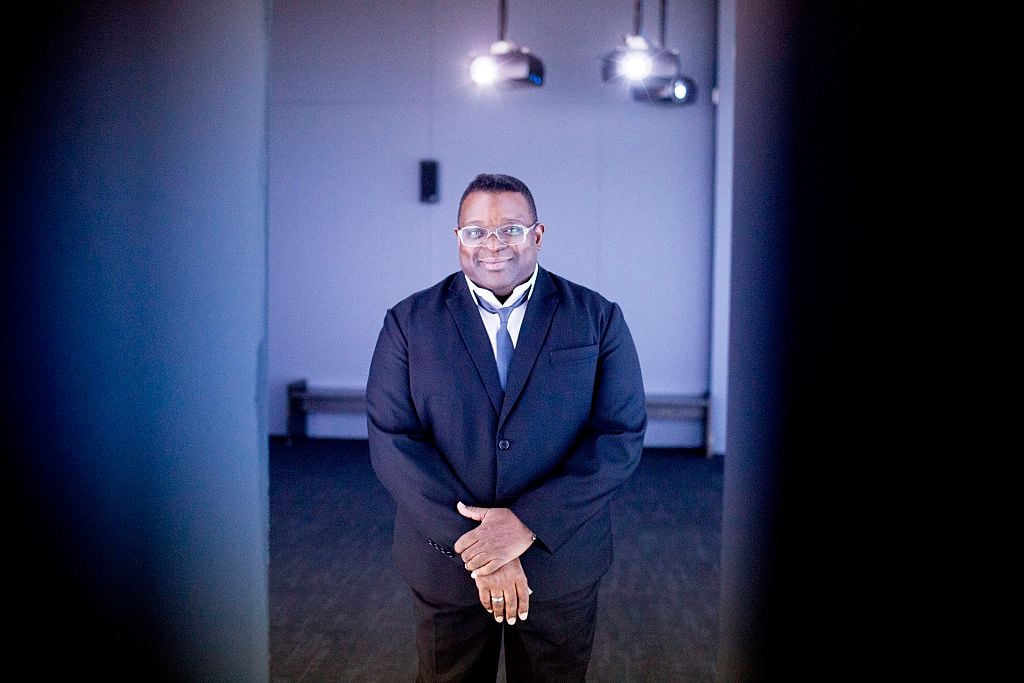
We spoke with the artist about his nuanced and moving work, now on view at the Barnes Foundation.

Amah-Rose Abrams

Isaac Julien has a history of working with the legacy of the Harlem Renaissance. So it makes sense that his latest commission, for Philadelphia’s Barnes Foundation, circled back on writer, philosopher, and “father” of the Harlem Renaissance Alain Locke.
Locke and Albert Barnes had a history. The collector was one of the first in the United States to collect and show African Art, amassing a collection that Locke, the first African-American Rhodes Scholar, visited, studied and used for research in his writing and editing work. But their relationship soured: they had clashing interpretations of African art, and Barnes accused Locke of stealing his ideas.
Once Again… (Statues Never Die) (2022), Julien’s five-channel film about Locke, is installed among items from Barnes’s collection of African sculpture and works by Richmond Barthé and Matthew Angelo Harrison. The work takes many positions, using texts by Bell Hooks alongside writings, performed by actors, by Barnes and Locke.
Julien also shows a black female curator walking through the Pitt Rivers museum today and an imagined interaction between Locke and artist Richmond Barthé. Shot against the backdrop of the collection, this beautiful film takes us on a journey as nuanced and varied as the debates it touches upon.
On the occasion of the show, we spoke with Julien about the work, how it connect to old and new debates, and the artist’s thoughts on restitution.
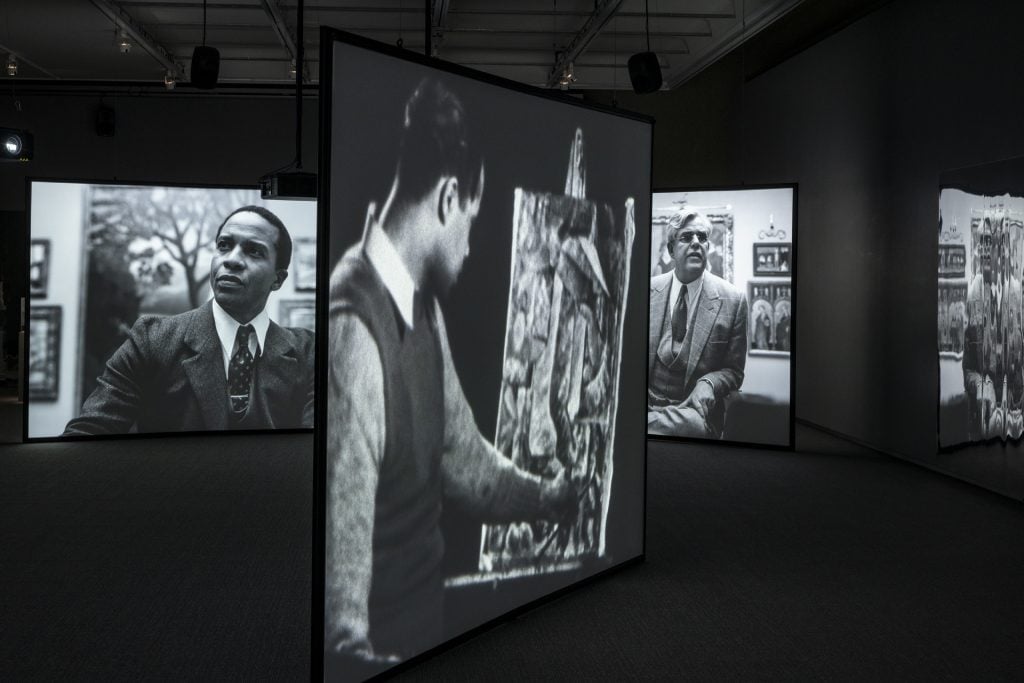
Isaac Julien: Once Again … (Statues Never Die), (2022) The Barnes Foundation, installation view. Image courtesy Isaac Julien and Victoria Miro, London/Venice. Photo by Henrik Kam.
You have a history of working with the Harlem Renaissance. What about it speaks to you?
Well, you could say this work is almost like a prequel to Looking for Langston (1989), which, of course, was a film very much looking at the Harlem Renaissance. I look back to that period—the late ’80s—because that was when I first met artists like Glenn Ligon and curators like Thelma Golden, art critics like Kenny Jones and Dawoud Bey, the photographer. There was a real synergy taking place.
Paul Gilroy had just written The Black Atlantic or was about to finish it, but I had been able to read some of his early chapters, which was pretty much an entrance to my conceptual thinking about Black art movements. I wasn’t taught about Black Modernism in its American variants, with movements like the Harlem Renaissance, when I was at art school. These had been absences in my art history lessons at St. Martin’s School of Art. But also, there was the question of themes around sexuality and desire, which were also very centrally located in the Harlem Renaissance.
Looking for Langston was also made during the AIDS crisis. So that’s a kind of echo, in terms of making Once Again… (Statues Never Die) (2022) during the COVID crisis, in the middle of another pandemic and thinking about questions of mortality.
Do you think these ideas have become part of wider thinking?
These debates are seen as new today, but they’re actually not new. They’ve just been articulated separately by different generations.
That’s one of the reasons why in Once Again… (Statues Never Die) there’s this scenario where we have young African artists or students examining African sculptures. That is taken from a film that was made in 1970 called You Hide Me by Nii Kwate Owoo. It was made 50 years ago, and is all about questions of restitution, which we’re debating today.
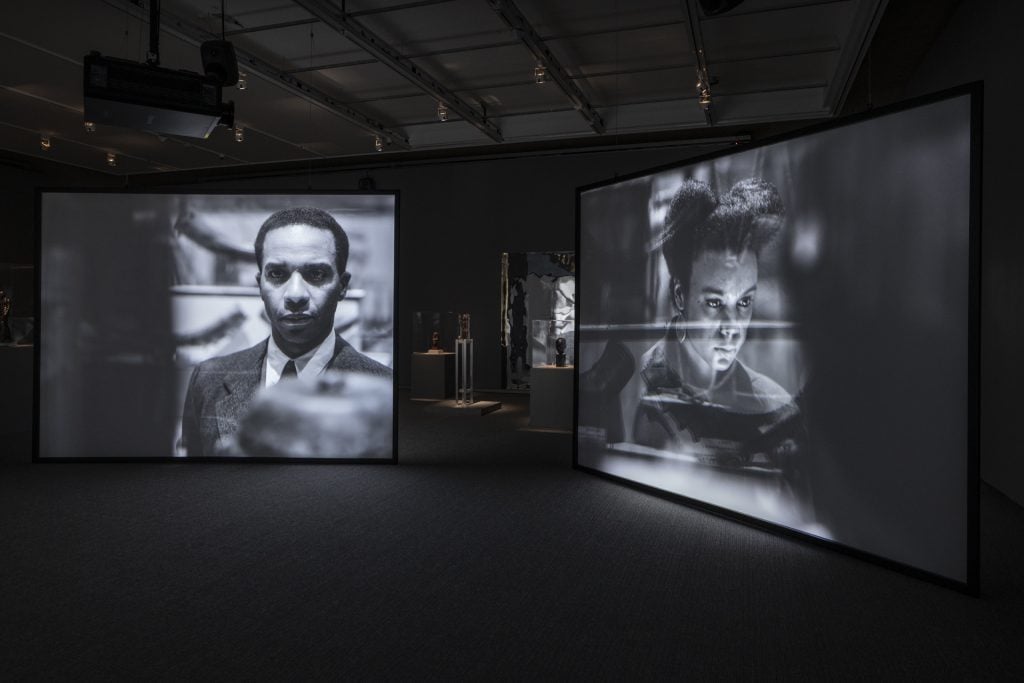
Isaac Julien: Once Again … (Statues Never Die), (2022) The Barnes Foundation, installation view. Image courtesy Isaac Julien and Victoria Miro, London/Venice. Photo by Henrik Kam.
What made you want to make a film specifically about Alain Locke?
When I got the commission, I thought the thing about Barnes is that he has an omnipresence. There’s a way in which his fixed gaze, or the way that he wants to control how people look at works, is something Locke was unpicking. I saw Locke’s point of view as important, and it would also connect to earlier explorations of Locke in Looking for Langston. I think the piece of work is, in a way, utilizing the commission to think about Locke as someone who could be turned to.
In addition to making this, I would look at the collection not from Barnes’s view, but more from Locke’s point of view. But then, of course, developing the work, I do realize that both these points of views are in a way from the West, and that’s where I began to develop the Black curator’s voice in the piece, because I felt we needed to have someone who had a completely different relationship to those objects.
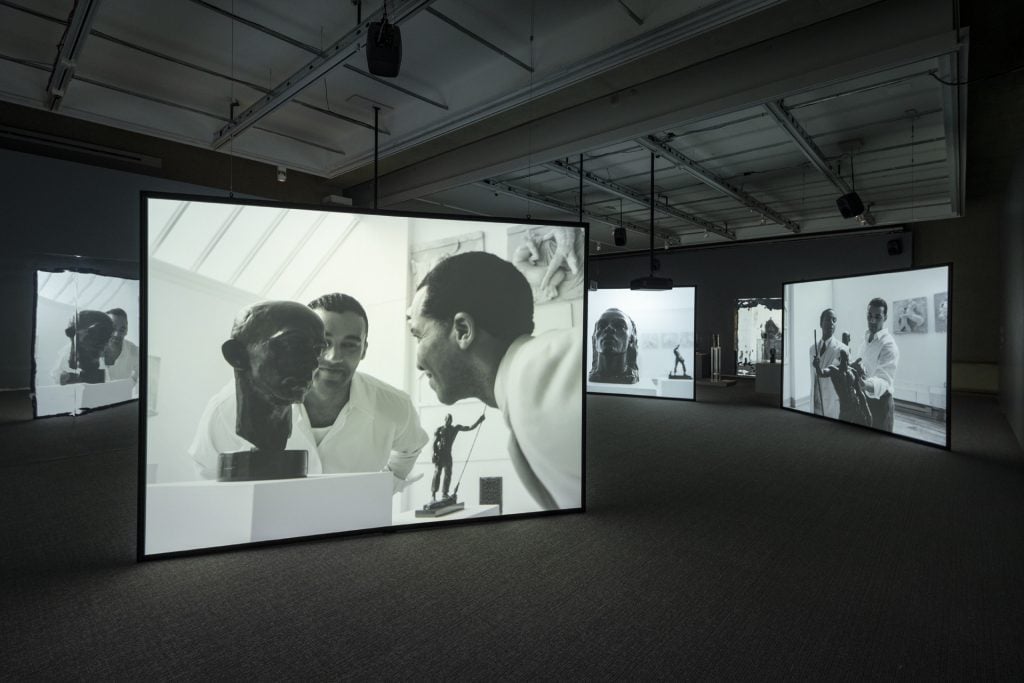
Isaac Julien: Once Again … (Statues Never Die), (2022) The Barnes Foundation, installation view. Image courtesy Isaac Julien and Victoria Miro, London/Venice. Photo by Henrik Kam.
Why do you think engagement with the Harlem Renaissance and the Black intellectuals of that time is so popular at the moment?
People have framed it as a paradise of decolonial thinking, and I’m not quite sure what that means. So I am a bit hesitant to use it in terms of my own work. But I think maybe that’s because I was involved in [that] debate. For example, I made a film on Frantz Fanon called Black Skin, White Masks in the mid ’90s with my partner Mark Nash. It’s a debate, which I don’t see as unfinished, between the post-colonial and the decolonial. I think I can see generationally how one wants them to mark a particular moment. But it feels that we’re still in the throes of the unfinished business of these moments and conversations, which constitute a kind of reckoning. We’ve seen various forms of existential crises and political upheavals, cultural debates and controversies that can all change around these different questions around nationalism, race, and culture. It is a contentious time.
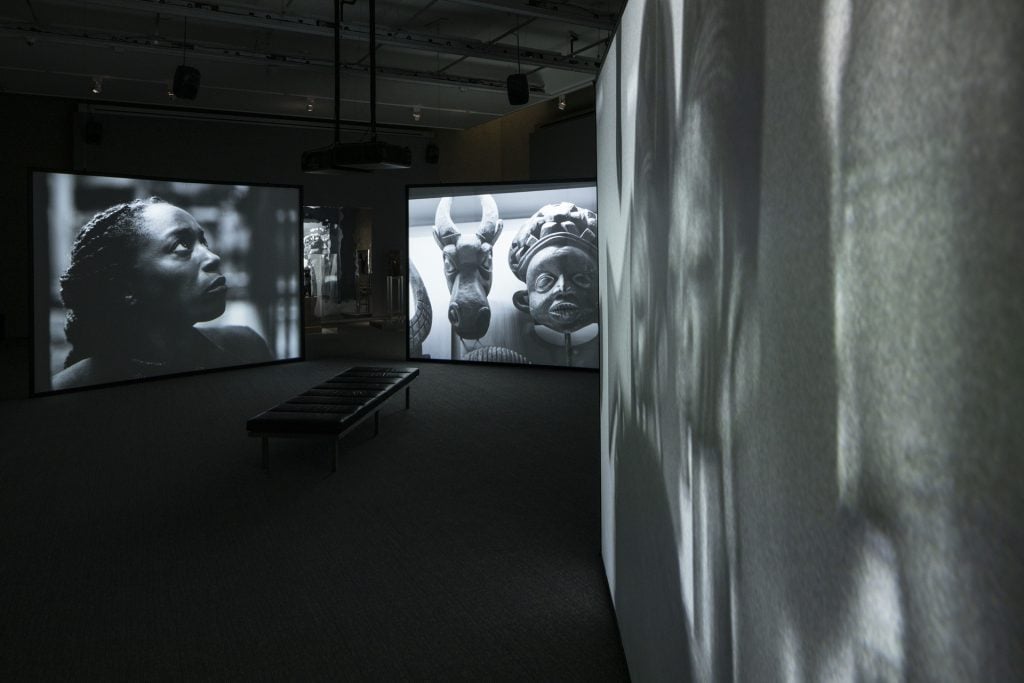
Isaac Julien: Once Again … (Statues Never Die), (2022) The Barnes Foundation, installation view. Image courtesy Isaac Julien and Victoria Miro, London/Venice. Photo by Henrik Kam.
What do you feel when looking at Barnes’s collection of African art?
I see lots of things. I think it’s an amazing collection, an astonishing collection. Obviously, I can see the kind of kleptomania Barnes was involved in. I think Barnes, in the end, wanted to amass a statement. He came from a working-class background, was an outsider to Philadelphia white bourgeois society, and left the majority control of the foundation’s board to a Black college, Lincoln University. All these things have now manifested over time as something very controversial.
It’s great to be able to have some of the African works displayed in the actual gallery, and to have this kind of seance between the objects and sculptures. There’s a kind of dialectic that takes place and I think it’d be interesting one day if there could be the possibility for the works to be moved, and the display to be altered. I think the creators in the Barnes Museum should be free to make interpretations of that collection.
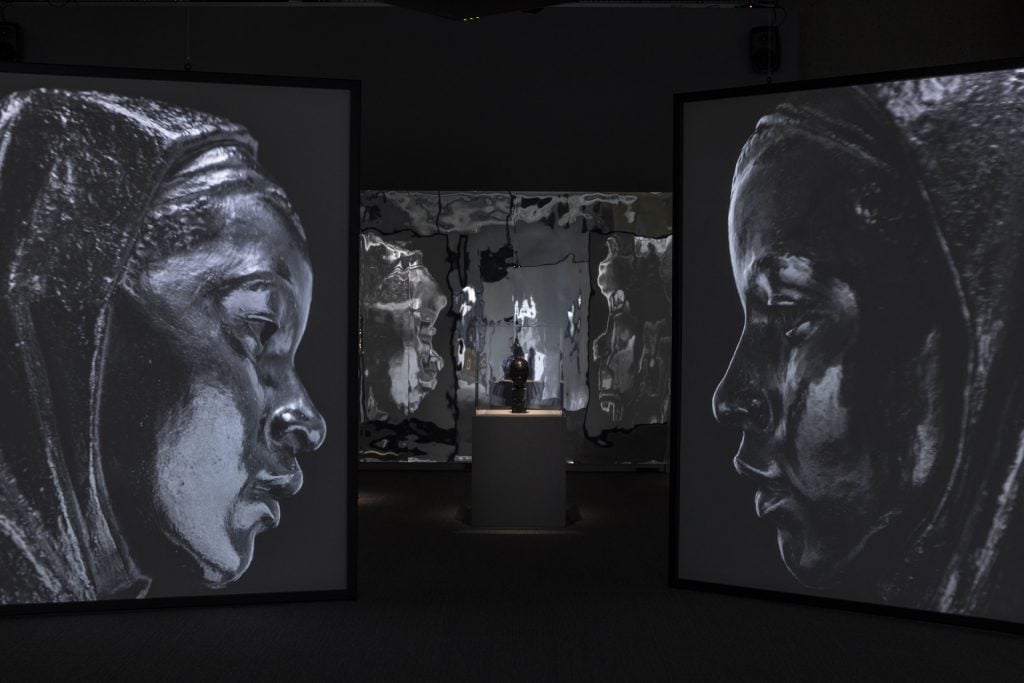
Isaac Julien: Once Again … (Statues Never Die), (2022) The Barnes Foundation, installation view. Image courtesy Isaac Julien and Victoria Miro, London/Venice. Photo by Henrik Kam.
What is your view on active collections of historical African art and artifacts today?
These debates have been taking place for a long time. The only thing new is the difference in contexts. You have the beginnings of the repatriation of objects taken under violent conditions, and I think that’s good. Ultimately, that needs to happen.
Correction, 8/19/22: An earlier iteration of this article and its headline suggested that Alain Locke was the curator of Albert Barnes’s collection. This is not the case. The article also erroneously stated that a Black character in Julien’s film visits the Barnes Foundation. In fact, it is the Pitt Rivers museum. We apologize for the errors.